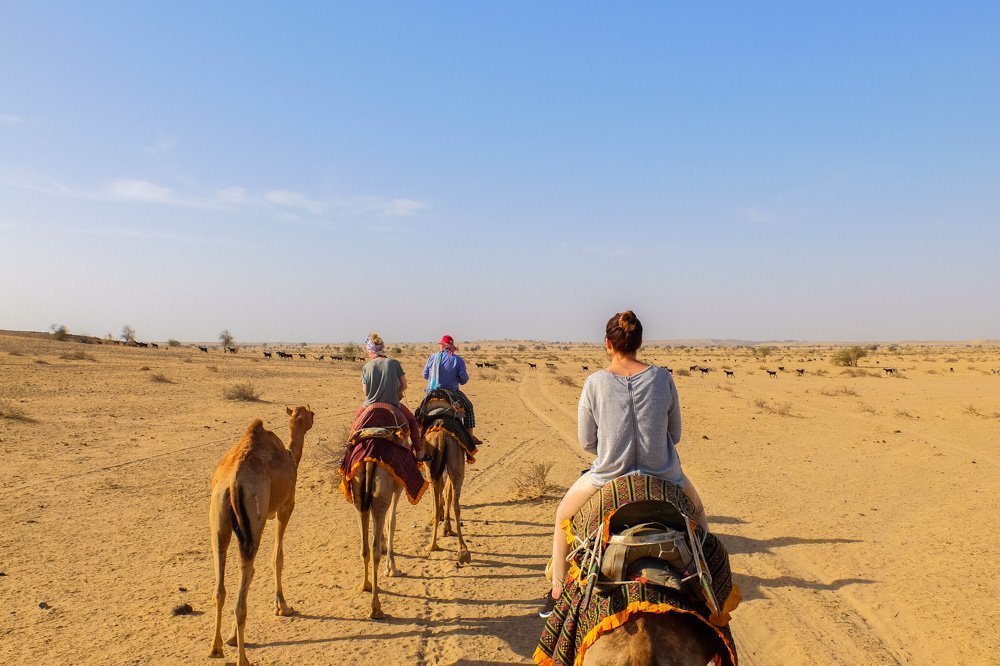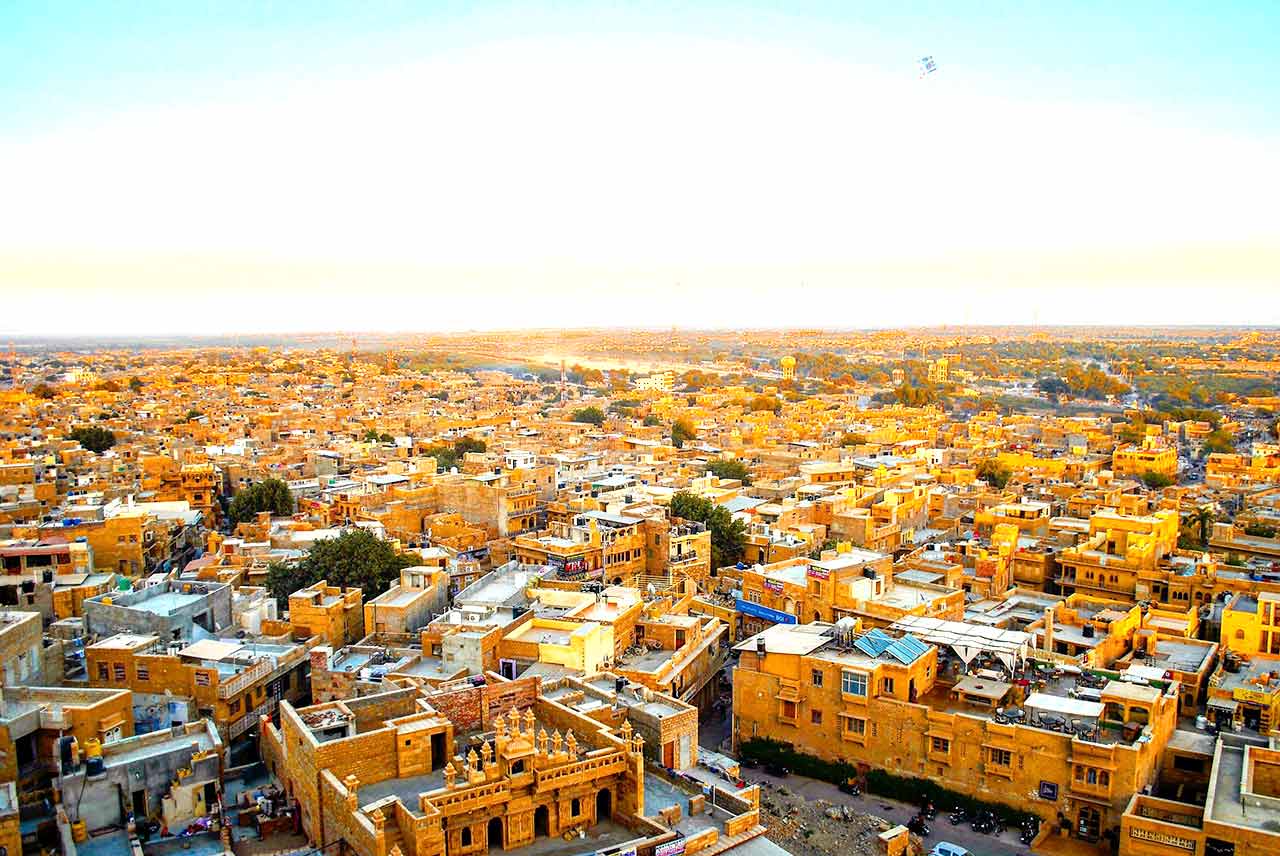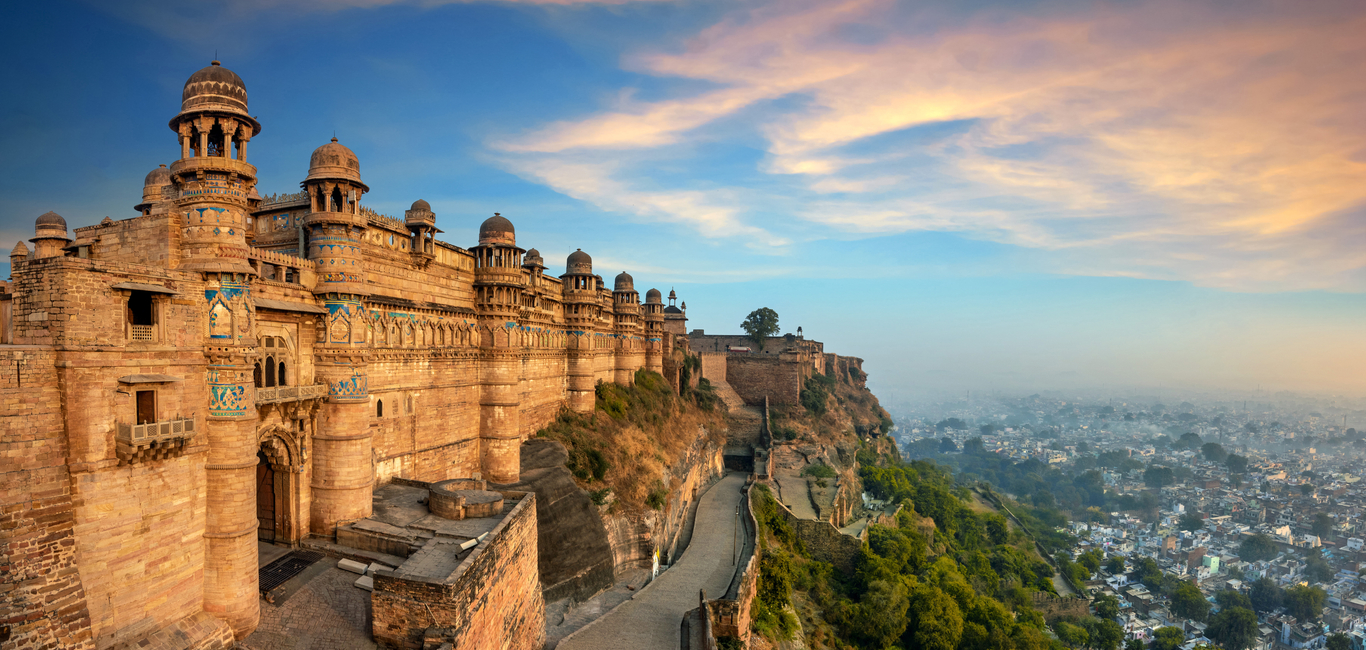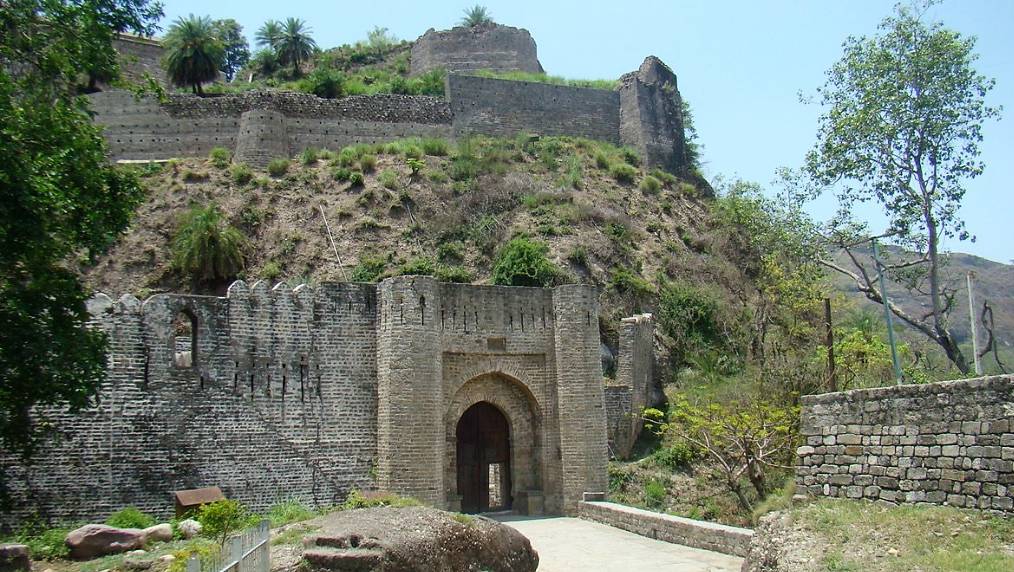Jaisalmer, the golden citadel of the Thar desert has emerged as one of the most popular tourist destinations in this part of the world. Few places can match the magnificence and grace of this museum city’.
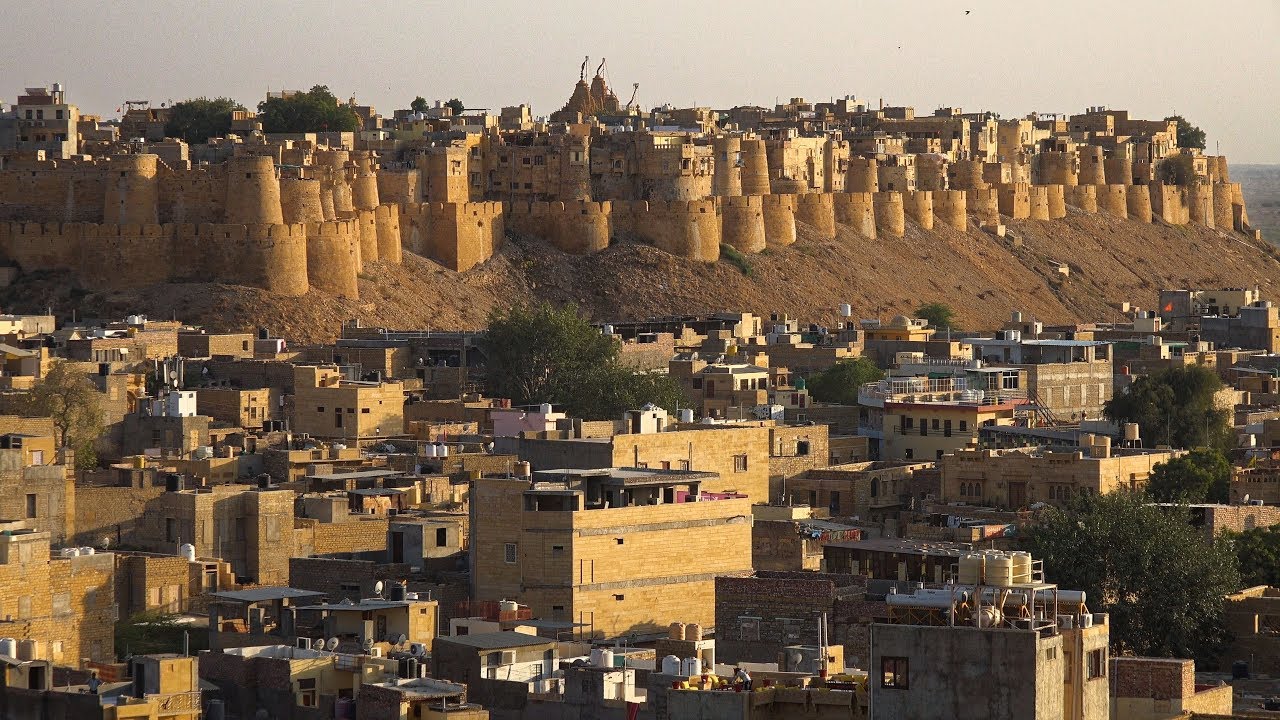 The Fort or Sonar Killa: The golden-hued fort perched atop the Jaisalmer Fort 76 meter high Trikuta Hill was built in 1156, by Rawal Jaisal, a Bhatti Rajput, and descendant of the Yadav clan. The fort built in Jurassic sandstone has its base encircled by a wall of solid stone blocks, above which the hill protects and supports the ramparts, forming a double line of defense. The bastions are in the form of half towers surrounded by high turrets and joined by thick walls. The entire living area is well protected inside the ramparts of the fort. It is approached through the Ganesh Pol or the Elephant Gate from the main market, followed by the Suraj Pol or the ‘Sun Gate’, Bhoota Pol or the Haunted Gate’ and finally the Hava Pol or the Wind Gate’. The Hava Pol stands sentinel to the royal palaces and leads to the main enclosure, the Hall of Public Audience. The palaces of the rulers built atop the main entrance form an imposing edifice crowned by a huge umbrella of metal mounted on a stone shaft. The fort IS dotted with many intricately carved haveli’s (mansions), which have become the major attraction of the museum city. Some of the important ones are-
The Fort or Sonar Killa: The golden-hued fort perched atop the Jaisalmer Fort 76 meter high Trikuta Hill was built in 1156, by Rawal Jaisal, a Bhatti Rajput, and descendant of the Yadav clan. The fort built in Jurassic sandstone has its base encircled by a wall of solid stone blocks, above which the hill protects and supports the ramparts, forming a double line of defense. The bastions are in the form of half towers surrounded by high turrets and joined by thick walls. The entire living area is well protected inside the ramparts of the fort. It is approached through the Ganesh Pol or the Elephant Gate from the main market, followed by the Suraj Pol or the ‘Sun Gate’, Bhoota Pol or the Haunted Gate’ and finally the Hava Pol or the Wind Gate’. The Hava Pol stands sentinel to the royal palaces and leads to the main enclosure, the Hall of Public Audience. The palaces of the rulers built atop the main entrance form an imposing edifice crowned by a huge umbrella of metal mounted on a stone shaft. The fort IS dotted with many intricately carved haveli’s (mansions), which have become the major attraction of the museum city. Some of the important ones are-
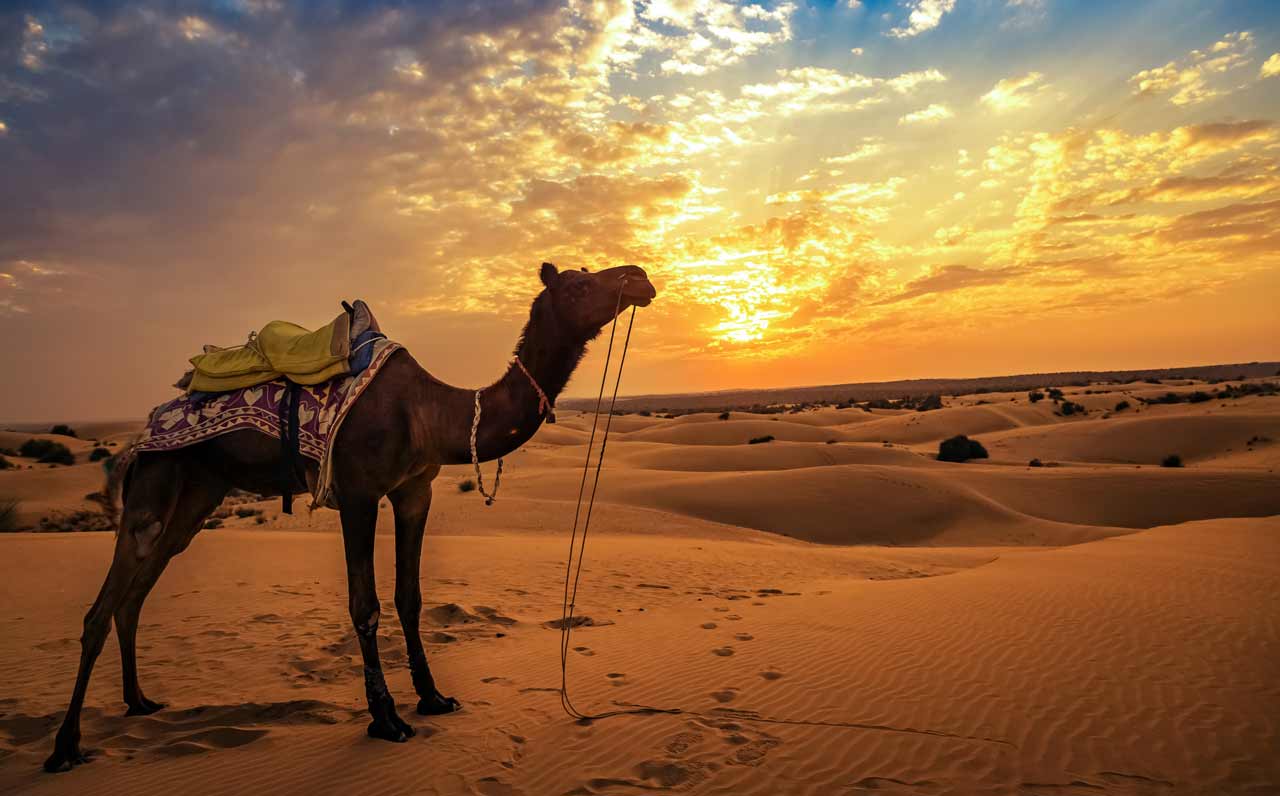 Patwon ki Haveli: This largest and most elaborate haveli of Jaisalmer is a classic example of Rajputana architecture. It was built by the five sons of Guman Chand Patwa, a rich brocade merchant. The construction began in 1800 and was completed in 50 years. The fabulous five-storeyed structure has extensive corridors and chambers which are supported by intricately carved pillars.
Patwon ki Haveli: This largest and most elaborate haveli of Jaisalmer is a classic example of Rajputana architecture. It was built by the five sons of Guman Chand Patwa, a rich brocade merchant. The construction began in 1800 and was completed in 50 years. The fabulous five-storeyed structure has extensive corridors and chambers which are supported by intricately carved pillars.
Nathmalji ki Haveli: It was the haveli of Nathmalji, the Prime Minister of the erstwhile State in the 19th century. The magnificent mansion was ornately carved by two brothers Lalu and Hathi and displays excellent craftsmanship. The brothers worked separately, one on the right side and other on the left side epitomizing the side-by-side symmetry during construction.
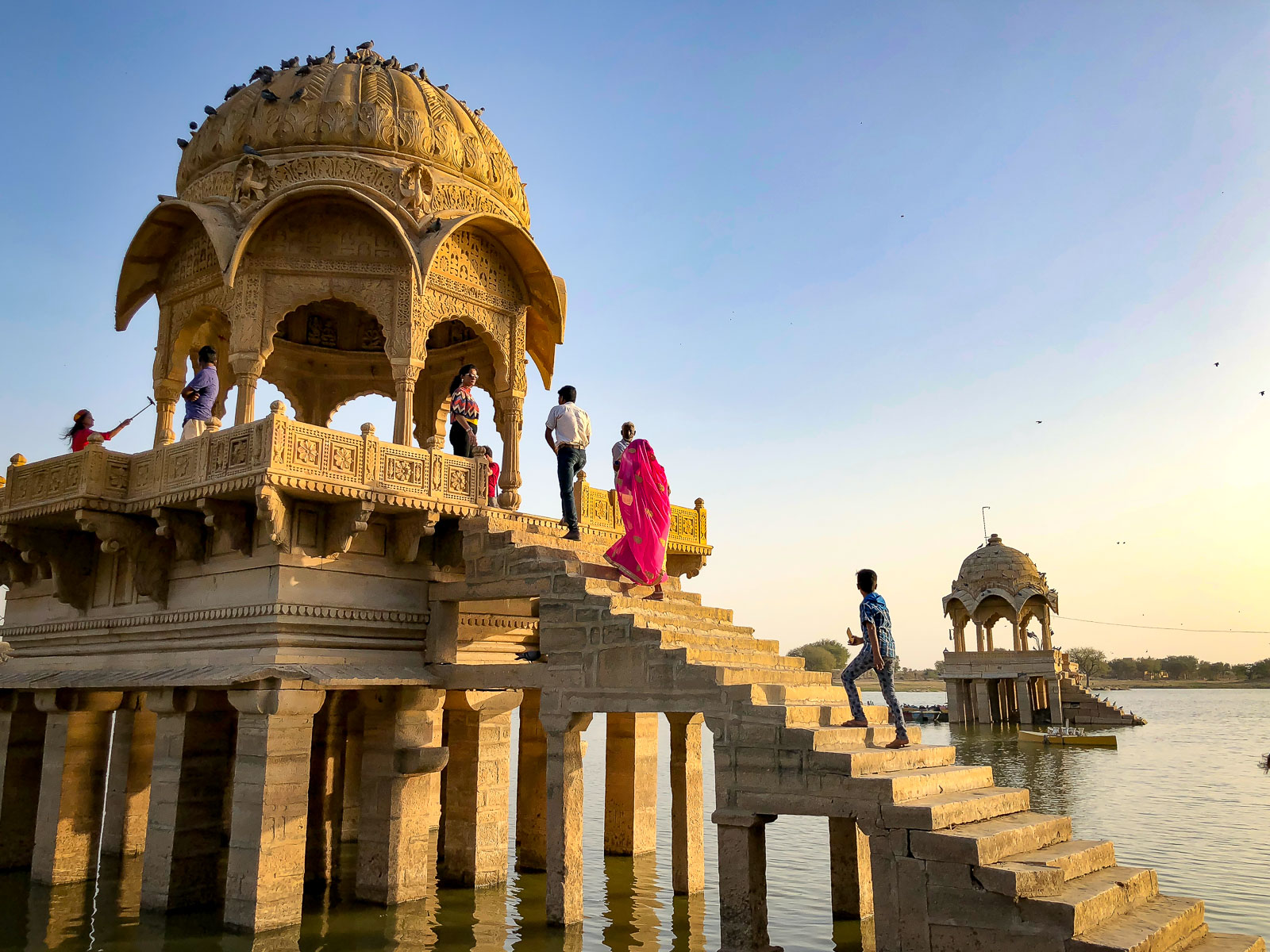 Salim Singhji ki Haveli: This conspicuous mansion belonged to Salim Singh Mohta. the tyrannical Prime Minister during 18th century. Its upper story has an elaborate projecting balcony supported by carved brackets in cantilever style. The fort is also studded with several Hindu and Jain temples dating back to the 12th -15th centuries. Rishabdevji Temple is one of the finest temples of the walled city. Other important Jain temples are Sri Sambhavnath Temple, Sri Ashtapadi Temple. Chintamani Paraswanathji temple, Sri Sheetalnath temple, Sri Shantinath temple, etc. The Gyan Bhandar or Library established as a part of Jain temples of the fort has some of the oldest and rarest manuscripts in the country.
Salim Singhji ki Haveli: This conspicuous mansion belonged to Salim Singh Mohta. the tyrannical Prime Minister during 18th century. Its upper story has an elaborate projecting balcony supported by carved brackets in cantilever style. The fort is also studded with several Hindu and Jain temples dating back to the 12th -15th centuries. Rishabdevji Temple is one of the finest temples of the walled city. Other important Jain temples are Sri Sambhavnath Temple, Sri Ashtapadi Temple. Chintamani Paraswanathji temple, Sri Sheetalnath temple, Sri Shantinath temple, etc. The Gyan Bhandar or Library established as a part of Jain temples of the fort has some of the oldest and rarest manuscripts in the country.
Badal Vilas – Mandir Palace: This excellent palace complex near the Amar Sagar Gate is the present home of the erstwhile royal family. Tazia Tower, the pagoda-shaped tower rising from the Badal pagoda Vilas palace complex is an architectural marvel and landmark of the town. The Muslim craftsmen of Jaisalmer built it as a token of love’ and gift before migrating to Pakistan in 1947.
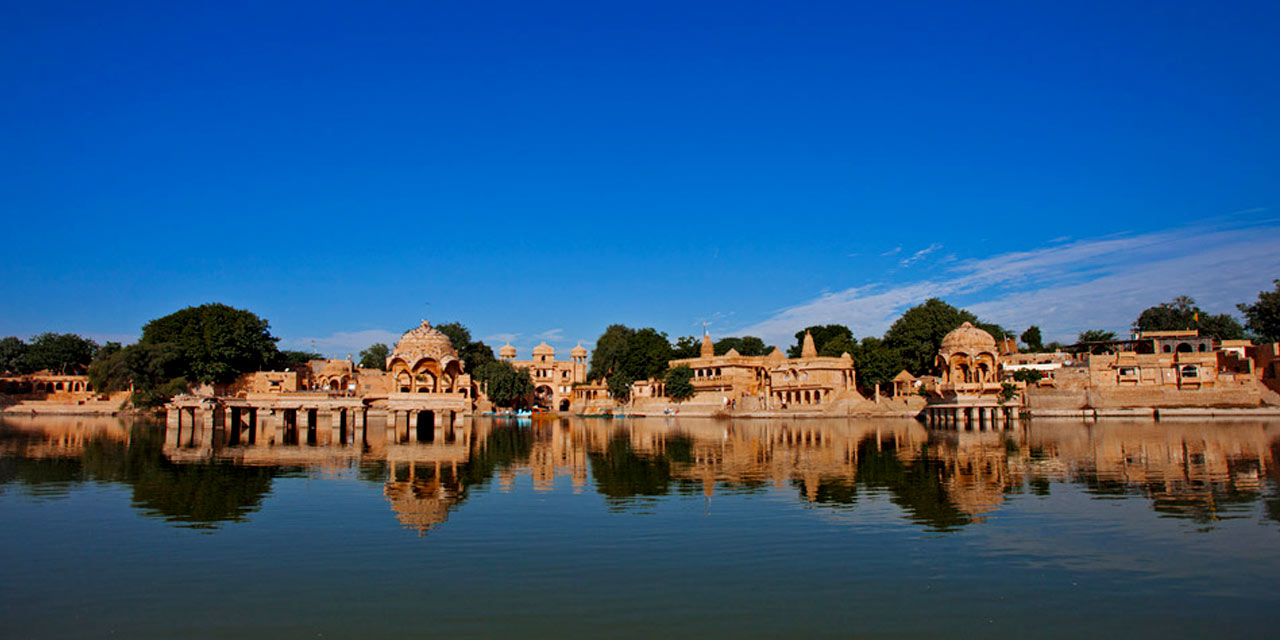 Gadisar or Gadsisar Lake: The rain fed of the artificial lake was an important source of drinking water in the past. It is a facility by gardens and sacred shrines. Boating facility is also available. The Tilon – ki – Pol, a beautiful gateway to the lake and the ghats (steps) were built by a renowned courtesan and singer.
Gadisar or Gadsisar Lake: The rain fed of the artificial lake was an important source of drinking water in the past. It is a facility by gardens and sacred shrines. Boating facility is also available. The Tilon – ki – Pol, a beautiful gateway to the lake and the ghats (steps) were built by a renowned courtesan and singer.
Folklore Museum or ‘Sanskritik Sangrahalaya: It is set on the banks of Gadisar Lake in Mehar Bagh garden and exhibits the rich cultural heritage of Jaisalmer.
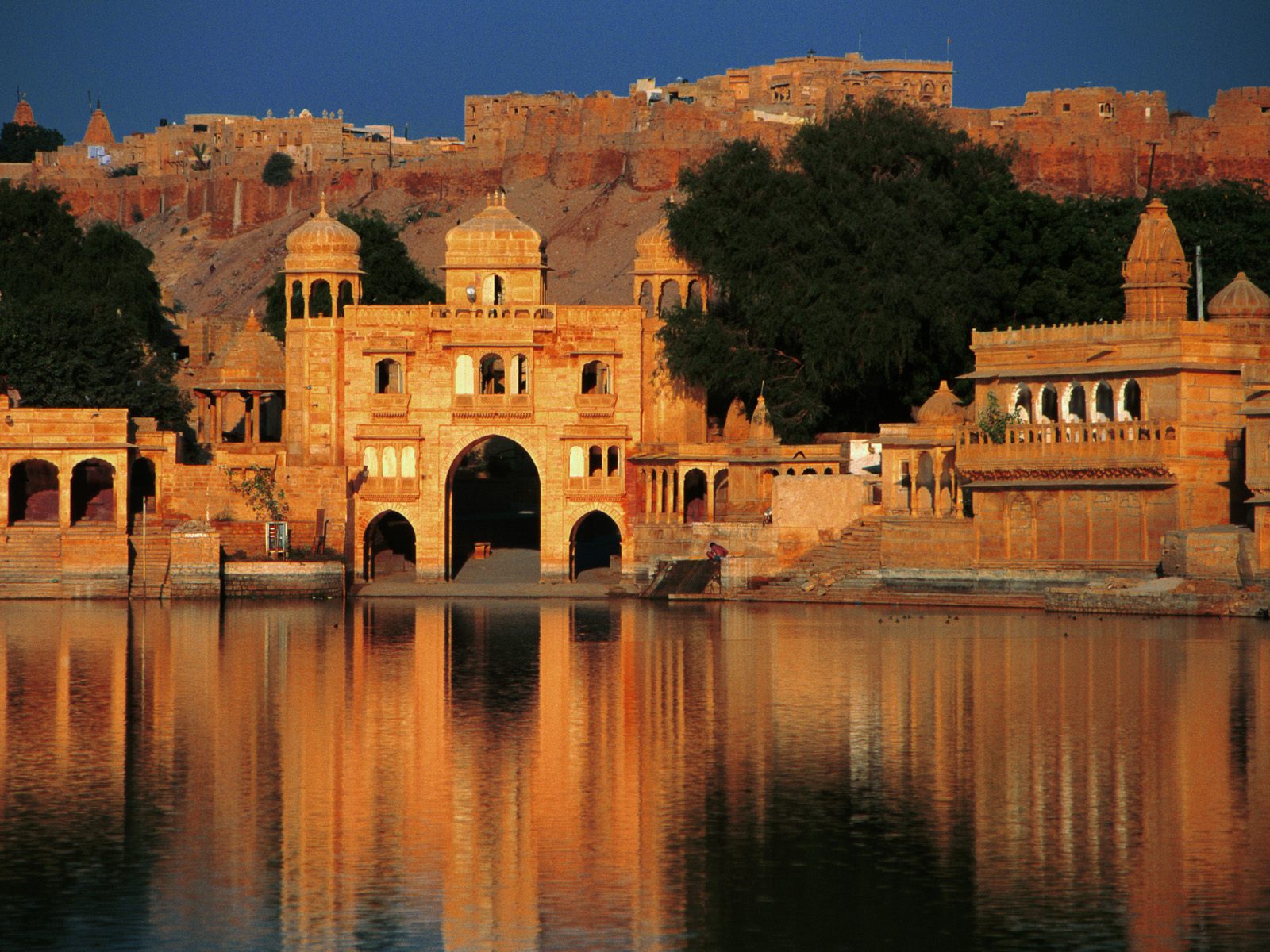 Government Museum: It is located on Police Line road and has a large collection of wood and marine fossils as well as sculptures dating back to the 12th century from ancient townships of Kiradu and Ludarva.
Government Museum: It is located on Police Line road and has a large collection of wood and marine fossils as well as sculptures dating back to the 12th century from ancient townships of Kiradu and Ludarva.
Around Jaisalmer:
Ludarva (16 kms.)
This ancient capital of Bhatti rulers is an important Jain pilgrim center. The magnificent Jain shrines here testify the glory of the bygone era. An ornamental gateway Toran’, at the entrance of the main temple, is a masterpiece of craftsmanship.
Sam Sand Dunes (42 kms.)
No visit to Jaisalmer is considered complete without a trip to the Sam sand dunes. Exciting camel safari amidst the dunes and viewing sunset from here is an unforgettable experience.
Desert National Park (45 kms.)
It is set in the backdrop of rugged terrain, Sam Sand Dunes with sweeping sand dunes and scrub-covered hills. The park is home to chinkara, blackbuck, desert fox, wolf and desert cat, etc. But, the star attraction is the Great Indian Bustard, the tall and heavy endangered bird. Other birds seen here are sandgrouse, partridges, bee-eaters, larks, and shrikes. Migratory birds like demoiselle crane or ‘Kurjan’ also visit the park. Spiny-tailed lizard monitor lizard, vipers, kraits, etc. can also be spotted in the park. Sudashri Forest Post (75 km.), is the ideal site for observing the wildlife of the park.
Wood Fossil Park, Aakal (17 kms.)
The unique fossil park, on the Barmer Road, is a paleontologist’s delight.